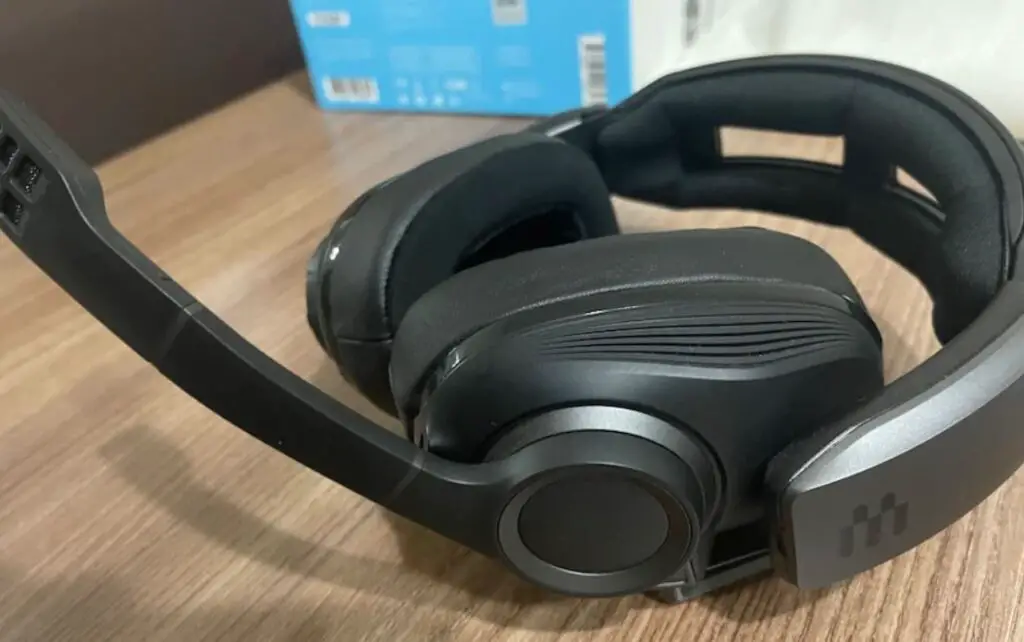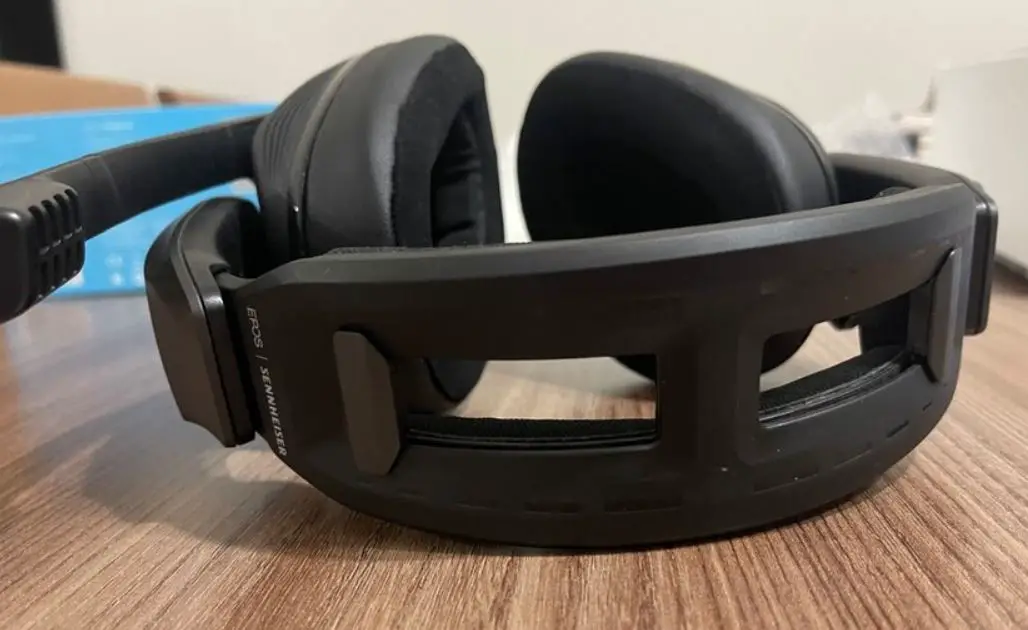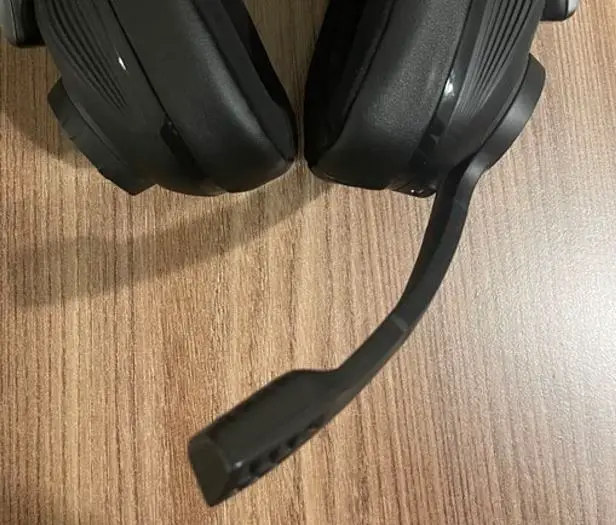After the excellent headsets GSP 600 and GSP 500, we reviewed the flagship of Sennheiser’s gaming headsets : the GSP 670. Will the brand’s first wireless model reshuffle the cards and dethrone the best?
Known for a long time for its Hi-Fi headphones, Sennheiser has also distinguished itself with the general public in the world of video games. The German brand broke through with its Game Zero and Game One gaming headsets, then confirmed its expertise five years later with its GSP line.
The first two models to come out, the GSP 600 and GSP 500, have recently been joined by a more affordable version (GSP 300), then by a wireless model, the GSP 670, which we are testing today.
Even if Sennheiser is not at its first gaming headset, it is the initial wireless reference of the manufacturer which has just renamed its EPOS gaming branch. This headset arrives on a mature market made up of many references and driven by particularly tough competition.
The challenge is all the more taken up since the GSP 670 is aiming for the top of the basket with an introductory price of $350. To distinguish itself, it puts forward above all its sound performance, broadcasting or capture, without forgetting the quality of the wireless transmission.
This model also has a dual wireless connection with Bluetooth integration, as well as virtual 7.1 home surround.
Table of Contents
Sennheiser GSP 670: Pros and Cons
Pros
- Good feeling of comfort…
- Well balanced bass and midrange.
- Respect for the timbres and the dynamics.
- Nice reproduction of sound space.
- Excellent microphone.
Cons
- Bit small for bigger heads.
- Shy highs and lacking precision.
- Slightly convoluted ergonomics
- Double wireless connection very difficult to use.
- No analog connection.
Design

Sennheiser did not look far to design this GSP 670. The model is an almost perfect copy of the GSP 600 in terms of look and manufacture. The only difference lies in the black color used here.
Like its wired companions, the GSP 670 has an atypical and imposing design. The headset is made mostly of plastic parts, except for the metal hinges that connect the ear cups to the headband.
Even if we expected a more careful finish (you can easily spot many assembly marks), especially for a headset in this price range, the whole thing seems very robust. No parts creak or squeak after more than a month of daily use.
The headband is relatively flexible and supports twists well, while the plastic used seems relatively dense. The brand has made the effort to choose rather light materials; nevertheless the size of the headset makes it quite heavy (400 g).
Comfort
The GSP 670 did not hold any surprises for us in terms of comfort. The sensations provided are in fact similar to those of the GSP 600. The headset is easy to handle and easily finds its place on the head, despite its size. Its wide and soft ear cups encompass the pavilions well and the pressure points are correctly distributed.
The notched headband is easily adjusted and extends sufficiently to suit the majority of sizes. In order to adjust the headset as well as possible, an adjustment of the pressure caused by its wearing is possible via two dedicated sliders. Nevertheless, even by reducing it to the maximum with this setting, the GSP 670 never manages to be really forgotten.

We feel that particular care has been taken in the design of the pads, in particular those of the ear cups, combining different materials (imitation leather, mesh fabric and alcantara style) to deliver good passive insulation and a soft contact, while optimizing the ventilation.
The heavy weight of the headset and its ability to significantly isolate the user from surrounding noises play a role, but not only. The particular design of the headset generates a more accentuated pinching effect on larger heads at the jaw level, preventing it from being worn for several hours in a row without a break. In addition, the deployment of the headband is a bit short: the largest noggins will therefore feel a little cramped.
User Experience
As we know, Sennheiser does not like to do things like everyone else. The ergonomics of this model prove it once again. Interaction with the headphones goes through a switch, a button and two potentiometers.
The first, contrary to what one might think, is not used to turn on the headphones, but to know the battery level at any time and to force pairing in Bluetooth. The headphones are actually powered up using the large volume potentiometer: you have to increase the volume to turn it on and turn it down to the maximum to turn it off (position 0 turns it off, a very slight “notch” signaling this threshold).
Luckily, the GSP 670 has an auto-sleep feature that kicks in when it no longer receives a signal or when it’s been lying flat on a desk for a while. Convenient if you forget to reset the potentiometer to level 0. The other, smaller wheel is assigned to the toggle between the sound of the chat and the game.
We greatly appreciate its presence, which is not always guaranteed on gaming headsets. However, this wheel is a bit painful to use, because there is no stop to find the central position. The single “smart” button can be assigned to toggle EQ profiles or enable/disable virtual 7.1 surround.
It’s a bit of a cold shower on the wireless connection side. Proprietary communication (via USB dongle) is certainly perfectly stable at short range and there is absolutely no latency problem, but it picks up quickly when you move a little too far away. In multiple use cases, we’ve noticed disruption beyond about 5-7m away, sometimes with a wall getting in the way. Few wireless models are as capricious at this distance.
Bluetooth integration is also of little interest in a configuration with a dual proprietary wireless/Bluetooth connection, because there is no way to switch manually and easily from one to the other, and even then less to mix the signals. Only a call on the device connected via Bluetooth will force the switch. Once done, it is not possible to easily return to the signal coming from the USB transmitter. In our case, we had to manually disconnect the Bluetooth source or turn the headphones off/on.
Connectivity
The GSP 670 does not include any analog wired input. It will therefore be necessary to be satisfied with the wireless or wired connection via USB. What’s more, the manufacturer has decided to keep the good old micro-USB connector rather than USB-C.
Battery
Sennheiser announces an autonomy that can vary from 16 to 20 hours depending on the connection mode (Bluetooth or owner). In practice, we never managed to exceed 18 hours of use with a full charge only via the proprietary wireless connection, and 15 hours with the double connection with Bluetooth.
This result is satisfactory, but still remains a bit low compared to the respective 24 and 30 hours delivered by the RIG 800 and the HyperX Cloud Flight.
Sound
The sound profile of the Sennheiser GSP 670 shares a lot in common with that of the GSP 600, its wired cousin from the same manufacturer. This gaming headset delivers an equally natural and immersive rendering.
The GSP 670 uses the recipes of the GSP series headphones with a sound philosophy that is reminiscent of Sennheiser Hi-Fi headphones. The first part of the audible spectrum is particularly balanced here, even if this reference is intended to be a bit more flattering in the extreme bass than its cousins. The seat is solid, the bass is deep and very well defined. They are perfectly in their place and never mask the upper registers.
The most finicky may possibly blame them for a very slight lack of definition, especially compared to other GSP headphones, but nothing that prevents you from enjoying any audio content in good conditions. The mid register is not left out; on the contrary, since there is again an excellent balance in the frequency response.
The timbres are perfectly respected and defined, we benefit from a very good effect of presence and a sharp sound, without it being aggressive.
Microphone
The GSP 670 is accompanied by the imposing gooseneck microphone, characteristic of Sennheiser gaming headsets. Not detachable, it has a flexible part in the center of the rod to facilitate its placement.
No specific button is assigned to mute/demute the microphone: the operation is carried out simply by raising it or lowering it completely. A distinct little notch and “click” signal when the mic is on or off.
The microphone of the GSP 670 fulfills its mission brilliantly and is even placed as a reference among wireless headsets. We just can’t find anything to complain about. The signal is powerful, clean and perfectly balanced.

The microphone of the Sennheiser GSP 670 fulfills its mission brilliantly and is even placed as a reference among wireless headsets. We just can’t find anything to complain about. The signal is powerful, clean and perfectly balanced.
The voice timbre is preserved and it is intelligible in all circumstances. The tight directivity of the microphone makes it possible to naturally detach the voice from the surrounding noise, but it is possible to reduce it even more significantly by using the noise gate and the noise reduction algorithm… at the cost of a less clean and detailed rendering.
Sennheiser GSP 670: CONCLUSION
Sennheiser and its GSP 670 first test in the wireless version was generally successful. These headphones retain the advantages of the excellent GSP 500 and 600, with good sound reproduction (although a little less controlled) and above all an extremely high-performance microphone.
Nevertheless, it is difficult not to be frustrated by certain small ergonomic failures in view of the great claims of this headset. If you’re ready to invest that much in a wireless model, we can only advise you to take a look at the Astro A50, Cloud Flight or RIG 800 before making any purchase decision.
Current Best Price on Amazon: $149.30
Price History on Amazon
| Months | Lowest Price on Amazon |
|---|---|
| Sep 2022 | $179.99 |
| Oct 2022 | $159.99 |
| Nov 2022 | $163.99 |
| Dec 2022 | $157.99 |
| Jan 2023 | $167.19 |
| Feb 2023 | $149.99 |
| Mar 2023 | $149.30 |
Sennheiser GSP 670: Specs
| Headset type | Closed |
| Headset | Over-the-ear headset |
| Weight | 398g |
| Removable battery | Nope |
| Detachable cable | Yes |
| Cable length | 1.2m |
| Connectors | USB-A |
| Wireless connection | Bluetooth, proprietary RF |
| Supported Bluetooth codecs | SBC |
| Battery | 18 hours |
| Active noise reduction | Nope |
| Listening to the environment | Nope |


